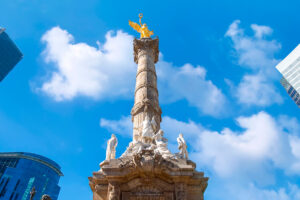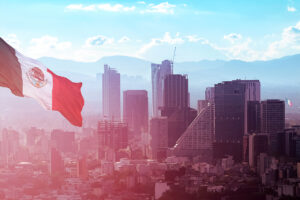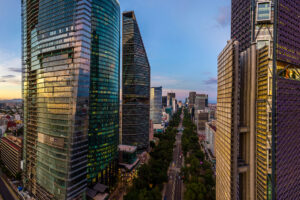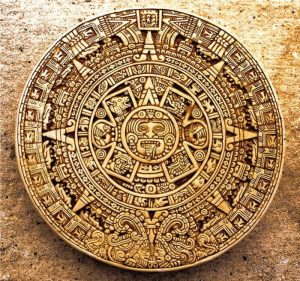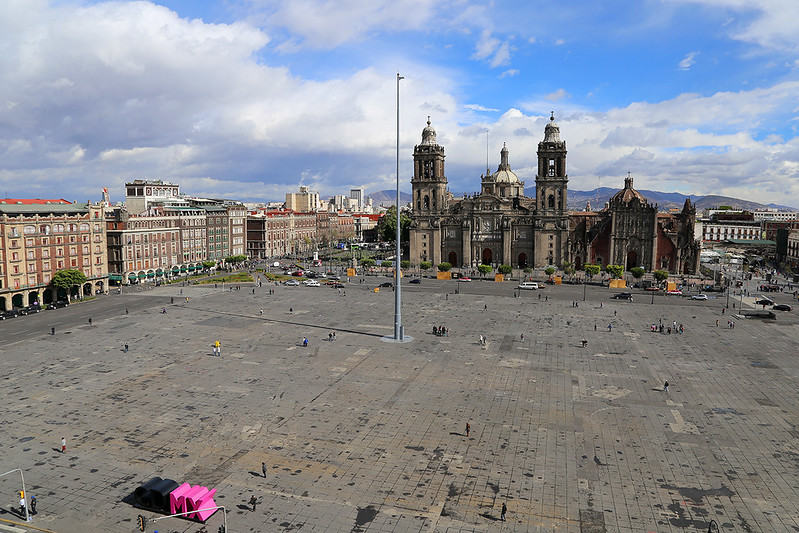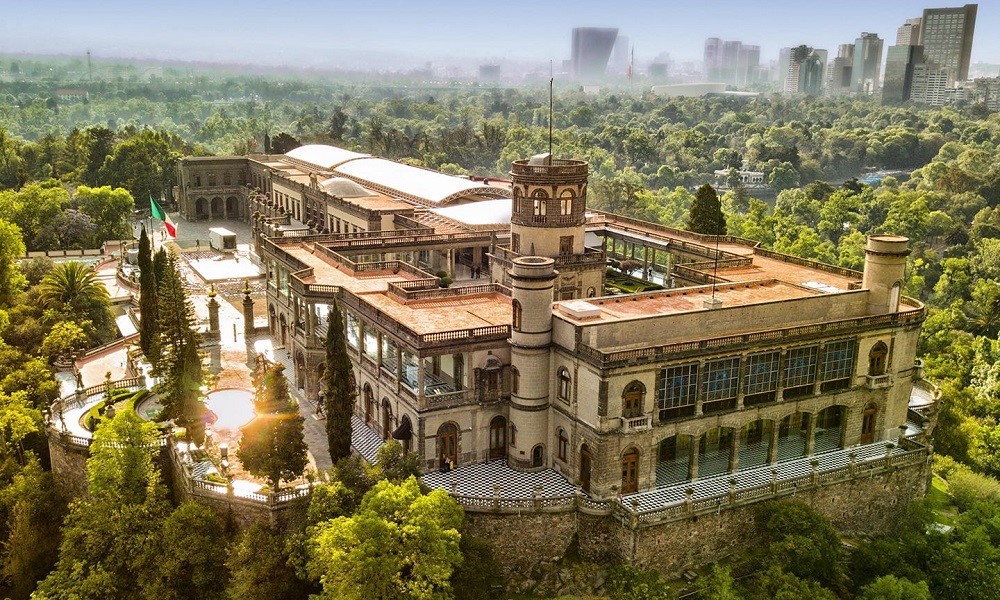- Overview
- Itinerary
- History
- Best Time
- Gallery
- FAQ
Central Mexico, the heart of the country, invites you to discover its rich history, vibrant culture, and stunning natural landscapes. This captivating region is home to bustling cities, charming colonial towns, ancient archaeological sites, and breathtaking natural wonders.
Immerse yourself in the vibrant energy of Mexico City, the country's capital, where you can explore world-class museums, stroll through historic plazas, and savor delicious street food. Discover the colonial charm of Puebla, known for its colorful Talavera pottery and exquisite cuisine. Step back in time at the ancient ruins of Teotihuacan, one of the most important archaeological sites in Mexico.
Venture beyond the cities and discover the natural beauty of Central Mexico. Hike through the lush forests of the Sierra Madre mountains, marvel at the towering waterfalls of Hierve el Agua, and relax in the tranquil waters of natural hot springs.
Central Mexico offers a diverse and unforgettable experience, combining history, culture, and adventure. Whether you're a history buff, a foodie, or an outdoor enthusiast, this enchanting region has something to captivate every traveler.
Central Mexico Excursions (8 Days)
Day 1 (Saturday)
- Arrival in Mexico City, hotel check-in.
- Welcome meeting.
Day 2 (Sunday)
- 7:00 to 8:45 am: Breakfast.
- Chapultepec Castle tour.
- Walk through the historic area.
- Return to the hotel and rest.
- Preparations for the evening dinner.
Day 3 (Monday)
- 7:00 to 8:45 am: Breakfast.
- Tour of the Guadalupe Shrine.
- Lunch at La Gruta.
- Tour of Teotihuacan.
- Dinner at the hotel.
Day 4 (Tuesday)
- 7:00 to 8:45 am: Breakfast.
- Visit to Coyoacan.
- Lunch at a local taqueria.
- Free afternoon to explore.
- Dinner at the hotel.
Day 5 (Wednesday)
- 7:00 to 8:45 am: Breakfast.
- Excursion to Xochimilco.
- Lunch aboard trajineras.
- Return to the hotel and rest.
- Dinner at a local restaurant.
Day 6 (Thursday)
- 7:00 to 8:45 am: Breakfast.
- Tour of the Frida Kahlo Museum.
- Lunch at a nearby café.
- Free afternoon.
- Dinner at the hotel.
Day 7 (Friday)
- 7:00 to 8:45 am: Breakfast.
- Tour of the Zocalo and Metropolitan Cathedral.
- Lunch at a typical restaurant.
- Free afternoon for shopping and exploration.
- Farewell dinner at a luxury restaurant.
Day 8 (Saturday)
- 7:00 to 8:45 am: Breakfast.
- Hotel check-out.
- Transfer to the airport.
Central Mexico is a region steeped in history, where ancient civilizations, colonial influences, and revolutionary movements have shaped its identity.
Ancient Civilizations:
- Teotihuacan: This once-mighty city, with its iconic pyramids of the Sun and Moon, was a major center of power and influence in Mesoamerica from around 100 BC to 550 AD. Its mysterious origins and intricate urban planning continue to fascinate archaeologists and visitors alike.
- Toltecs: The Toltecs, a warrior civilization, rose to prominence in the 10th century, establishing their capital at Tula. Their legacy can be seen in their impressive architecture and their influence on later cultures, including the Aztecs.
- Aztecs: The Aztecs, known for their military prowess and complex social structure, built a vast empire that stretched across central Mexico. Their capital, Tenochtitlan (now Mexico City), was a marvel of engineering and urban planning.
Colonial Era:
- Spanish Conquest: In 1521, Hernán Cortés and his Spanish conquistadors conquered Tenochtitlan, marking the beginning of Spanish rule in Mexico.
- Colonial Architecture: The Spanish left their mark on Central Mexico with their grand cathedrals, ornate palaces, and charming colonial towns like Puebla and Querétaro.
- Independence Movement: After centuries of Spanish rule, Mexico gained its independence in 1821, following a long and bloody struggle.
Modern Era:
- Mexican Revolution: The Mexican Revolution (1910-1920) was a tumultuous period of social and political upheaval that led to significant reforms and the establishment of a new government.
- Cultural Renaissance: The 20th century saw a flourishing of Mexican art, literature, and music, with figures like Frida Kahlo, Diego Rivera, and Octavio Paz gaining international recognition.
- Economic Development: Central Mexico has become a major economic and industrial center, with Mexico City serving as the country's financial and cultural hub.
Today, Central Mexico is a vibrant and dynamic region, where the past and present intertwine. Its rich history is evident in its archaeological sites, colonial architecture, and cultural traditions, while its modern cities and towns offer a glimpse into the future of Mexico.
Central Mexico enjoys a pleasant climate year-round, but the best time to visit depends on your preferences and the specific destinations you plan to explore.
- Spring (March-May): This is a popular time to visit, as the weather is warm and sunny, with comfortable temperatures ranging from the mid-60s to low 80s Fahrenheit (18-28 degrees Celsius). The jacaranda trees bloom in vibrant purple hues, adding a touch of magic to the landscape.
- Autumn (September-November): Another ideal time to visit, with mild temperatures and less rainfall than the summer months. The fall foliage in the Sierra Madre mountains is a sight to behold, with vibrant reds, oranges, and yellows painting the landscape.
- Winter (December-February): While temperatures can be cooler, especially in the evenings, the days are generally sunny and pleasant. This is a great time to experience the festive atmosphere of Christmas and New Year's celebrations in Mexico City and other towns.
- Summer (June-August): The rainy season brings afternoon showers, but they are usually short-lived and followed by sunshine. This is a good time to find lower prices and fewer crowds, especially if you don't mind the occasional rain.
Mexico City International Airport (MEX) is the main gateway to Central Mexico, with numerous domestic and international flights. From there, you can easily access other cities and towns in the region by bus, train, or rental car.
Visa requirements vary depending on your nationality. Citizens of many countries, including the United States, Canada, and most European Union countries, can enter Mexico for tourism purposes without a visa for stays up to 180 days. However, it's always best to check the specific requirements for your country before traveling.
Central Mexico is generally safe for tourists, but it's always wise to exercise caution and be aware of your surroundings. Avoid carrying large amounts of cash, stick to well-lit areas at night, and use reliable transportation services. It's also a good idea to learn a few basic Spanish phrases, as English may not be widely spoken outside of major tourist areas.

